
| Meteorite Types | ||
| There
are Three Main Types of Meteorites: Stony Meteorites are the most common meteorites. They are composed of mostly silicon-based minerals. They are heavier than native rock but are recognizable by their black fusion crust outer layer, that looks almost like a charcoal briquette. They account for approximately 94% of the observed meteorite falls. Iron Meteorites are from the core of a planet or asteroid that has been destroyed. As it's name suggests, they consist mainly of iron-nickel metal with small amounts of sulphide and carbide minerals. This is also the primary component of our Earth's core. These type of meteorites make up about 5% of the observed meteorite falls. They are the most recognized meteorite because of their weight. Stony-Iron Meteorites are undoubtedly the most beautiful of all the meteorites. The Pallasite Meteorite falls into this group. It is a striking and unusual kind o f meteorite in which olivine and iron are intergrown in roughly equal proportions; these meteorites are thus intermediate between stoney and iron meteorites.Their primary silicate material is olivine, which is distinguishable by it's greenish hue. Olivine exists here on our earth; as the August birthstone Peridot. Only 103 examples of Stony-Iron Meteorites are known to date. | ||
|
|
||
| Do
You Think You Have Found a Meteorite? There are a few things you can do to try and determine if you have actually found a meteorite. Meteorites fall every day, somewhere on the planet; but when you factor in how much of our planet is covered with water it shortens the percentage that will actually land where you can find it. The first thing you will notice is that your rock seems to be heavier than you would expect it to be. It will also look out of place compared to other rocks around it. Below are some things you can look for to try and determine if you have actually found a meteorite. |
||
|
|
||
| If
you
think you have found a Stony Meteorite: If
it is the most common meteorite found on our planet, the Stony
Meteorite, and if it is a relatively recent fall, then it will
still
have the black fusion crust. This fusion crust is caused by the
friction of our atmosphere as the stone is plummeting to our Earth.
These meteorites are called chondrites because of the chondrils they
contain inside. These chondrils are round, and grain-like in
the
meteorite. The Stony Meteorite makes
up approximately 86% of all falls are this type.
|
||
|
|
||
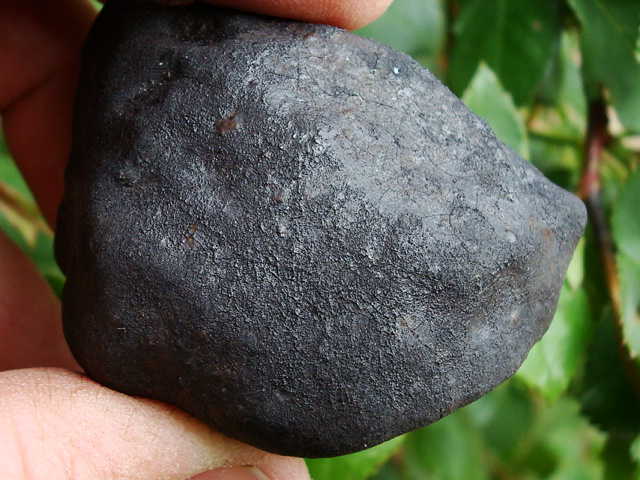 |
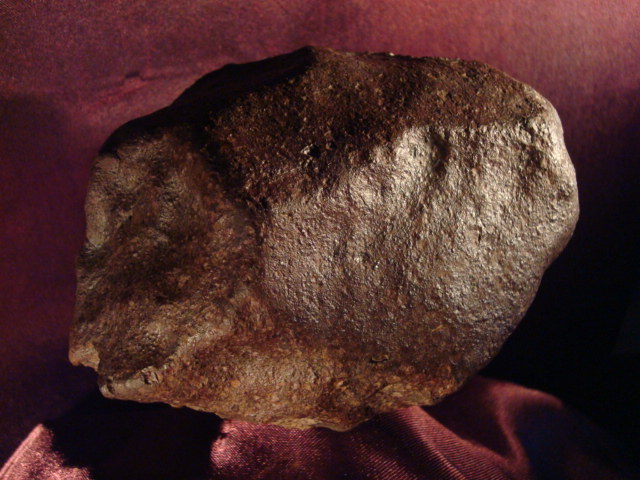 |
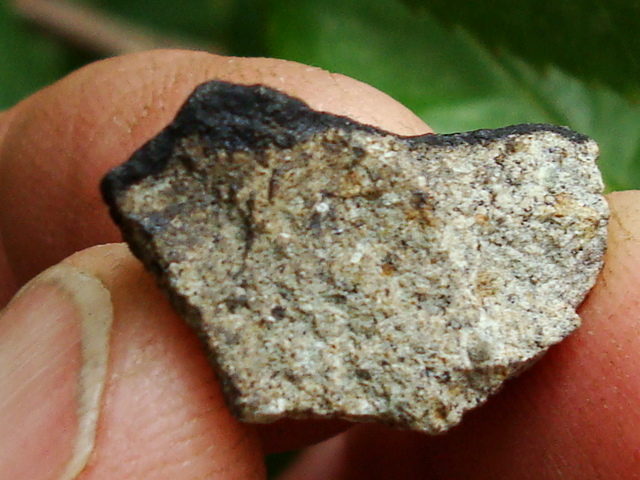 |
| These two pictures are of the West Texas Meteorite (Ash Creek) that fell Feb 15, 2009 at 11:00am show very clearly the outer burned layer that occurred during it's plunge to our planet. This was the first witnessed fall in Texas in one hundred years. | ||
|
Weathering:
Stony Meteorites weather at a much slower rate. Because they are comprised of minerals that don't react to our atmosphere, it takes years and years for them to change in appearance. You must keep in mind, then, that meteorites do not all erode at the same rate. A meteorite in Kansas, for example, will erode faster than one in Arizona due to the simple fact that there is more moisture in Kansas. If you live on the coasts, the air is more moist from the ocean, and most iron meteorites will begin to rust profusely if not taken care of properly. |
||
|
|
||
 |
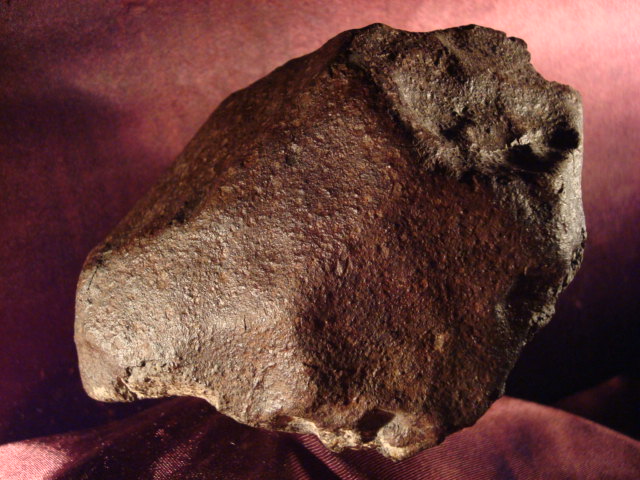 |
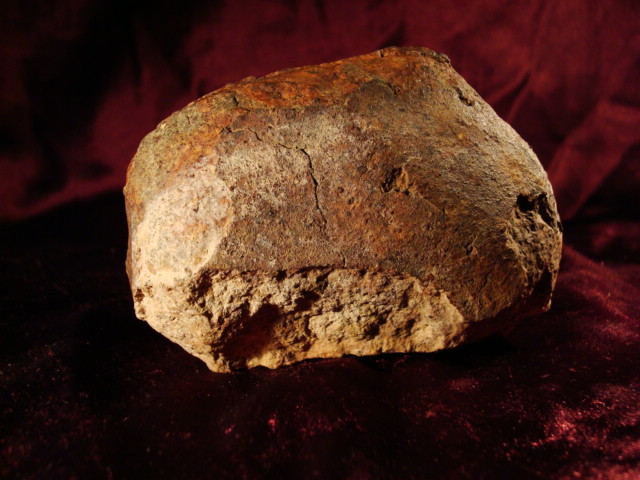 |
|
|
||
| These three pictures show the changes over time that happen once a Stony Meteorite reaches our Earth. The first picture is a brand new West Texas Meteorite (Ash Creek), which was a witnessed fall on Feb. 15th, 2009. The second picture is a Franconia Meteorite, which is approximately 200-300 years on our Earth. The last picture is a Gold Basin Meteorite, which is approximately 10,000 years on our Earth. All three of these meteorites are Chondrite Meteorites. This gives you an idea on the lifespan of a meteorite once it reaches us! | ||
|
|
||
|
If
you think you have found an iron meteorite:
If your rock seems very heavy, it could be an Iron Meteorite. First try using a magnet to see if it sticks to it. Just because a rock is magnetic, though, does not mean it is a meteorite. There are many rocks that have enough iron in them to be attracted to a magnet. Magnetite and Hematite are two of the most common "Meteor-Wrongs" that we see. What you are looking for are "thumb prints" or regmaglyphs; or flow lines on your specimen. An Iron Meteorite could also have a gun metal blue color to it. This is caused by the great amount of friction as it is coming through our atmosphere. Over time, this gun metal blue color will change due to the conditions of the area it is in as it naturally begins to oxidize. |
||
|
|
||
| This Sikhote-Alin Meteorite, from Siberia, Russia, was a witnessed fall in 1947. This is a great example of an Iron Meteorite. It shows the thumb print-like indentions called regmaglyphs. | ||
|
|
||
|
|
||
| This closeup of a Glorieta Mountain Pallasite Meteorite shows very distinct flow lines caused by the melting of the iron as it was coming through our atmosphere. You can see what looks like brush lines flowing from the edge back down the meteorite. It also shows the gun metal blue color which iron meteorites possess after entry through our atmosphere. | ||
| This Glorieta Mountain Pallasite Meteorite shows clearly the gun metal blue color that was caused by it's trip through our atmosphere. | ||
|
|
||
| Do you think you
have found a Stony-Iron Meteorite: The rarest of all meteorites, the Stony-Iron; or Pallasite Meteorite; is every meteorite hunters favorite meteorite to find. Since they make up such a small percentage of all meteorite falls, though, they are very rarely just found when you are out walking around! Because the Stony-Iron is roughly equal parts iron and olivine silicates, they have a similar appearance to the Iron Meteorites. They will be heavy and magnetic, and could even have olivine crystals sticking out of them! |
||
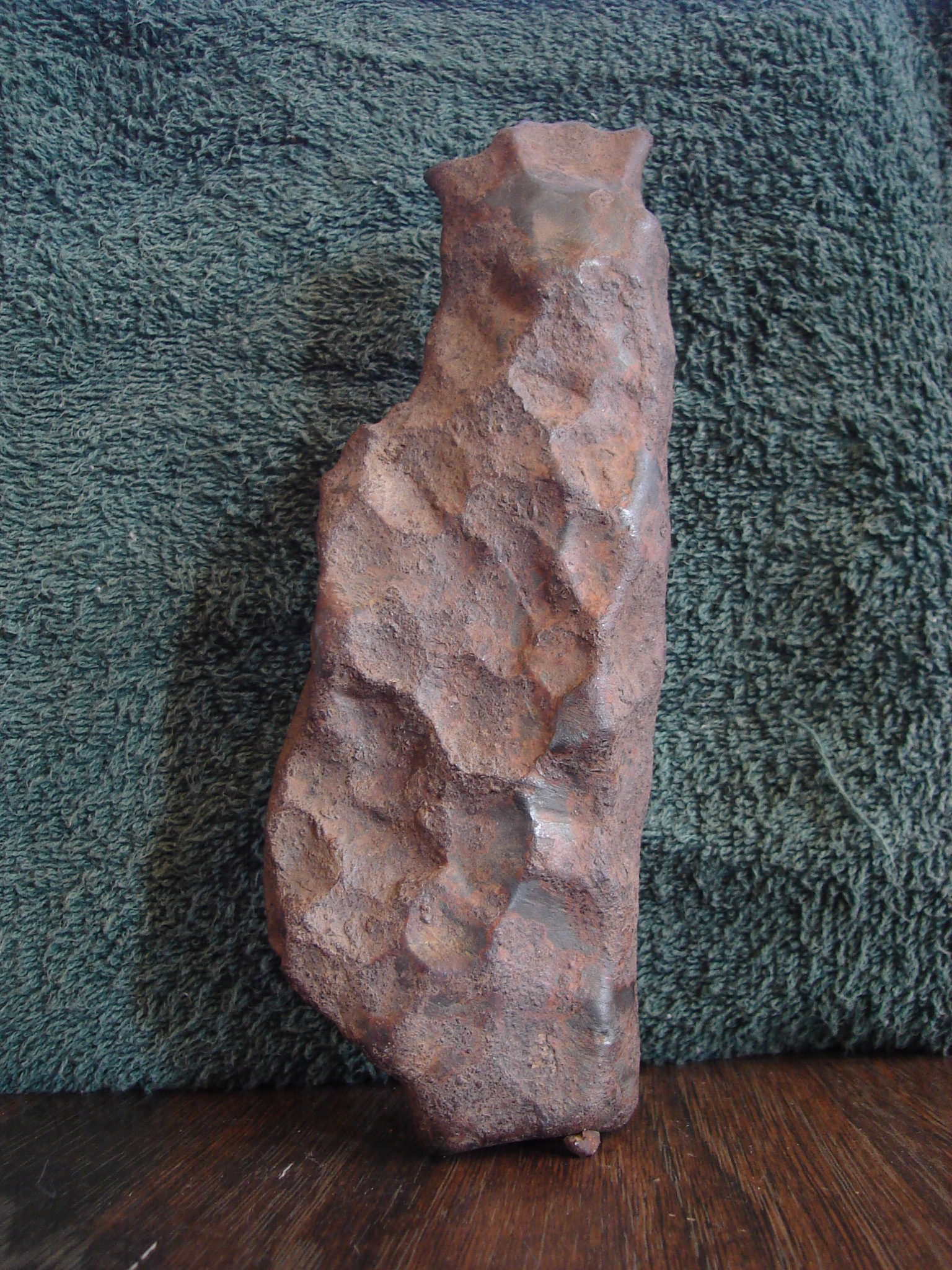 |
||
| This Glorieta Mountain Pallasite Meteorite is spicuel in shape- meaning elongated, and shows the natural patina of a pallasite. | ||
|
|
||
| This Glorieta Mountain Pallasite Meteorite has visible olivine crystals poking out of it. | ||
|
|
||
| And remember, the amazing
looking Stony-Iron Meteorites make up less than 2% of the total
meteorites that fall, so don't expect to find one your first time out! Now that you know what to look for, get out there and find one! But don't get discouraged - at lot of us that have been doing this for a long, long time still have not just went for a walk and found a new meteorite. Keith likes to say "If you do the Grind, you'll make the Find!" |
||